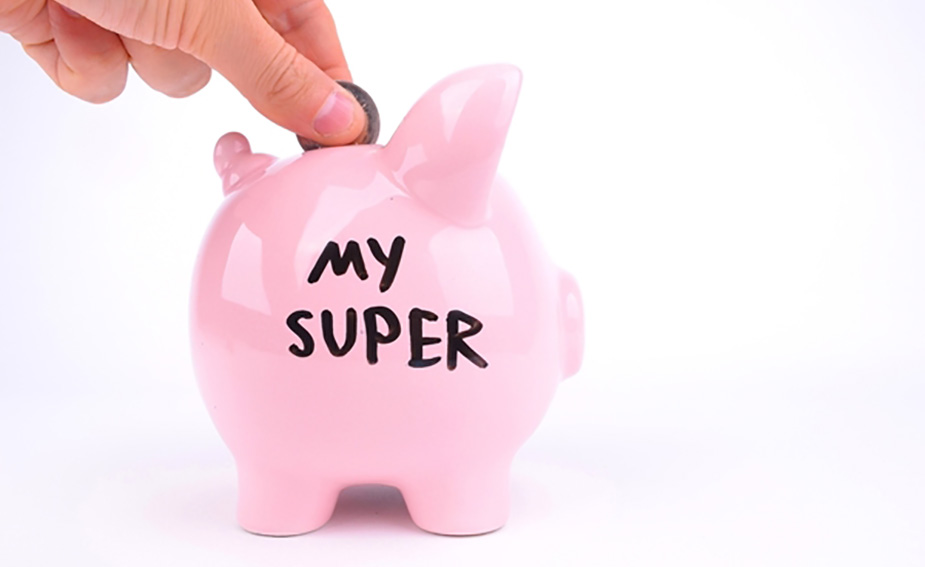
Investing in super through each decade of life
Ten years might not seem like a lot in the grand scheme of things, but a decade can drastically change a person’s life.
So here’s a rough outline on things to consider when investing in super at each milestone of life.
Late teens and early 20s
This is when you first enter the workforce on a full-time basis and when your salary is likely to be at its lowest. To help you kick-start your super balance, check whether you qualify for the government’s super co-contribution. This is where the government matches your personal non-concessional (after-tax) contributions (not the contributions from your employer or for which you have claimed a tax deduction) up to a maximum of $500.
The more you can put into super at this stage, the more time you are giving your investment to grow. When contributing to your super, it is important to understand the difference between concessional and non-concessional contributions and your contribution caps. You can find more details on this in our ‘Retirement savings simplified‘ article.
Also, if you held any part-time jobs or did other paid work, it is likely that you have had other super accounts opened for you. You can find any other super accounts you might have by using the ATO’s online SuperSeeker service. If you do have other super accounts, you may wish to consider consolidating them into a single account. Having one account will help save you admin fees which means more money left to invest.
Super is a long-term investment, and as you are at the beginning of this journey, you have more time to ride out the ups and downs of the markets, and can therefore consider an investment strategy which has a greater focus on growth assets as opposed to defensive assets. With the Virgin Super LifeStage Tracker® Balanced investment options, it automatically adjusts your investment mix from growth assets (shares and property) to defensive assets (cash and fixed interest) as you get older.
Find out more about investment types by reading ‘Investing in super: cash, shares and property‘.
Investing in Super through your 30s
With our 30s often comes a higher-paid job, a growing family and plans to buy your own home. However, MoneySmart states that Aussie couples with kids under five are likely to spend nearly $1,500 per week on bills, essentials and recreation (so that’s $1,500 not including family holiday plans or home deposit savings).
A good way to keep on top of life’s expenses is to prepare a budget. If it allows, you may find come extra cash to put towards your super and your retirement years.
This may mean it is time to slow down what you put into super after tax, in order to focus on keeping your household stable. However, you shouldn’t cease contributing all together. Negotiate a slightly lower salary sacrifice with your employer, and then see if you can make additional contributions after tax from your own pocket later on.
While you may be focused on other things, your super will keep working towards growing your balance. As you have gotten a bit older, and retirement is that little bit closer (but still a good while away), the Virgin Super LifeStage Tracker® Balanced investment options will allocate some of your investments away from growth assets and towards defensive assets such as Australian listed property and cash and fixed interest.
Investing in Super through your 40s
As the kids grow older and you ditch weekly rent for regular mortgage payments, bills continue to mount through your 40s. In fact, MoneySmart claims that as your children go through their teens and into the early 20s, your weekly expenditure rises to nearly $2,000.
Chances are you are also being paid more in your career, which will help. During this decade, it’s important to keep balancing your budget between stability at home and continued investment into your future. Retirement and maybe even early retirement might be something that you start to think of more and more. Find room in your budget to add that little bit extra to your super will help grow your balance.
If you’re with Virgin Super Essentials the LifeStage Tracker® Balanced investment option will still focus your investments on growth, however will have a bigger portion of your balance invested in defensive assets.
Related: VIDEO – Investing in Super through your 40’s
Investing in Super through your 50s
Most children will have left the nest by or during your 50s (or you may hope!). You may also have paid off the mortgage, which means your bills will reduce significantly.
“If households consume less once their kids leave home, they have a more modest target to replace and they save more between the emptying of the nest and retirement,” states a study from the Center for Retirement Research at Boston College.
With retirement not too far away, planning how you are going to get there is important. A transition to retirement plan might be the right option for you to maximise your super balance for retirement.
The Virgin Super LifeStage Tracker® Balanced option will have up to 50% (30% for LifeStage Tracker® Aggressive) of your balance invested in defensive assets, getting your portfolio ready for when you need to start drawing down.
Related: VIDEO – Investing in Super through your 50’s
Investing in Super through your 60s
This is the decade when most people will transition out of work and into retirement. Carrying over your transition to retirement strategy that you started in your 50s will help maximise your super balance. Importantly, as retirement is so close, it is important to protect your portfolio from losses that might come from an unfavourable market.
It is for this reason that the LifeStage Tracker® Balanced option will invest up to 80% of your balance (50% for LifeStage Tracker® Aggressive) in defensive options, aiming to give you greater stability as you get closer to retirement.
